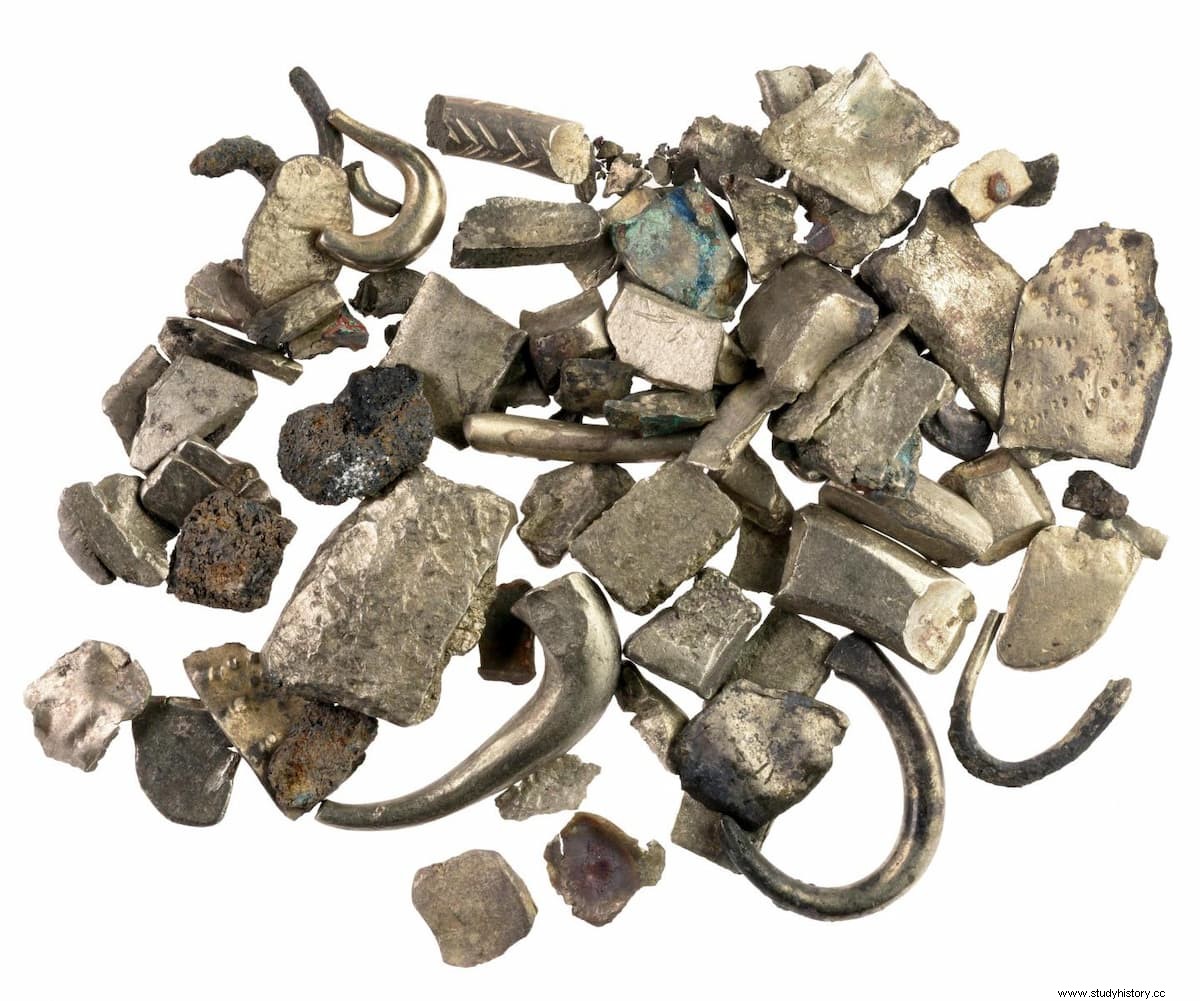Scientists have reconstructed the silver trade in the Eastern Mediterranean, in a period that includes the traditional dates of the Trojan War, the founding of Rome and the destruction of Solomon's Temple in Jerusalem. The team of French, Israeli and Australian scientists and numismatists found geochemical evidence that the pre-coin trade in silver continued throughout the Mediterranean throughout the Late Bronze and Iron Age periods, with supplies only occasionally dwindling. . The silver came from all over the northeast Mediterranean and from as far away as the Iberian Peninsula.
The team used high-precision isotope analysis to identify the ore sources of the minute traces of lead found in the Hacksilber silver. The Hacksilver it is an irregularly cut silver ingot mixed with broken pieces of bullion and jewelery that served as a means of payment in the southern Levant from the early 2nd millennium to the 4th century BC. Used in local and international transactions, its value was determined by weighing it on scales with standardized weights. It has been discovered in archaeological excavations usually stored inside ceramic containers and had to be imported as there was no silver to be mined in the Levant.
Presenting the research at the Goldschmidt geochemistry conference, Dr. Liesel Genteli stated that even before the minting of coins there was international trade, and the Hacksilber was one of the products that were exchanged for commodities .

The team analyzed the hacksilber from 13 different sites dating back to 1300 B.C. to 586 BC in the southern Levant, present-day Israel and Palestine. The samples included finds from 'En Gedi, Ekron, and Megiddo (also known as Armageddon). The researchers matched their findings with ore samples and showed that most Hacksilber it came from the southern Aegean and the Balkans (Macedonia, Thrace and Illyria). Some were also found to have come from as far away as Sardinia and Spain.
According to lead researcher Liesel Gentelli, previous researchers believed that the silver trade had come to an end following the collapse of society in the late Late Bronze Age, but our research shows that exchanges, especially between the south of the Levant and the aegean world, they never stopped. The peoples of the eastern Mediterranean remained connected. It is likely that the silver flowed into the Levant as a result of trade or looting.
Silver shortage periods are observed around the time of the transition from the Bronze to the Iron Age, around 1300-1100 BC. Some treasures from this period show that the silver has an unusually high content of copper, which would have been added to compensate for the lack of silver.
We cannot relate our findings on the silver trade to specific historical events, but our analysis shows the importance of the Hacksilber trade from before the Trojan War, which some scholars place as early as the 12th century BC, through the foundation of Rome in 753 BC, and until the end of the Iron Age in 586 BC, marked by the destruction of Solomon's Temple in Jerusalem by Nebuchadnezzar. Next, we see the gradual introduction of coinage, first in the form of various archaic coin finds, and later a transition to a monetary economy in the southern Levant around 450 BC. which made the Hacksilber trade lose relevance. However, this work reveals the continuing and crucial economic role that the Hacksilber played in the economies of the Bronze and Iron Ages .
Dr Matthew Ponting, Senior Lecturer in Archaeological Materials at the University of Liverpool, commented:This is important new work that confirms our understanding of trade and exchange routes in the Early Iron Age Levant. . The fact that all the silver found in the region had to have been imported presents interesting possibilities for investigating trade routes in general, as well as learning more about the use and preference of alloys during this important period in history.
